#Battle of Nagashino
Text
News say artillery power did make a difference in Nagashino, but maybe not in the way that you might think
For quite a long time, it’s the popular story that Nobunaga decimated the Takeda in Nagashino because he readily embraced guns when other clans didn’t. Despite how it’s being severely disputed in the scholarship, this story is still repeatedly trotted around, especially in the fandom/pop culture talking spaces.
First, a little credit to the “old stories”, as it were. The famous scene from Kurosawa Akira’s Kagemusha, of the Takeda cavalry units moving out one by one, and each getting mowed down by gunfire—that’s not entirely without basis. Its source was in fact the Shinchoukouki:
The battle raged from sunrise of the 21st of the Fifth Month to the Hour of the Sheep [around 2 p.m.], the action bearing East by Northeast. The Takeda army attacked in relays, but its soldiers kept being shot down, and its manpower gradually drained away to nothing.
(The Chronicle of Lord Nobunaga, page 226)
There’s actually a longer description in the text, detailing a narrative that’s very similar to the movie. One unit moves out, gets gunned down, and had to withdraw. The next unit moves out, gets gunned down too, and had to back off too. This kept going until about 5 units marched out, and eventually Katsuyori gave up and the Takeda army all withdrew.
So what was wrong in the “pop culture” story? For one, the Shinchoukouki text described this terrible move as being the Takeda’s last ditch attempt after they’re already surrounded. Meaning that there’s other strategy and battle manoeuvres that’s already taken place before this showdown finally happened. The Oda victory is not entirely thanks to the guns, although it does help. It would be a tougher win if the soldiers had to actually run out there and have a melee fight.
For another, it’s not like the Takeda or the other clans didn’t have guns. You’d have to ask why and how there were people making so many guns in the first place if it wasn’t a popular weapon that everyone’s actively using.
Lastly, just because the text says that the soldiers were “shot down”, it doesn’t automatically mean a rotating volley technique had been used.
Here’s the breaking news: This article from Yahoo News reports that what the Oda had that made the difference was likely having more bullets (possibly of a much higher quality as well).
The news report describes that research into bullet remains has identified particular kinds of bullets unique only to the Sengoku and very unlikely to have come from later periods in time, and these were found in Nagashino. From the studies conducted, the theory was that the Oda had a massive supply of high quality lead bullets that the Takeda didn’t.
In that time, lead was not only used for bullets, but also other smithing needs. As such, supply of domestic lead, it says, did not quite meet the necessary numbers, so they had to imports bulk loads from overseas. This is something that the Oda had advantage of, thanks to their Nanban connections and having monopoly of Sakai.
The Takeda, on the other hand, was not able to supply enough lead bullets that they were forced to melt down copper money to make the bullets with. Talk about literally burning down cash. The news reports that a letter artefact of Katsuyori ordering this had been found previously, and analysis of the copper bullets found in Nagashino has found that they have the same chemical composition as the Ming copper money that’s in circulation at the time. These copper bullets were judged by some to be inferior than the lead bullets.
And even after doing all that, there’s still not enough of bullets in supply on the Takeda side. The news then reported that after this defeat, Katsuyori learned from that mistake and circulated a new order decreeing that the army must supply at least 200 bullets for each gun that they have.
In conclusion, this new theory says that even though both sides had guns, the Takeda side ran out of bullets too early on and their artillery was then rendered useless. The Oda army, who still had plenty of bullets to go around, was able to keep on shooting the enemy to the ground.
I think this is a part of the conversation that didn’t really occur to a lot of people in the Sengoku gun conversations, especially in casual/non-academic or fandom spaces. Without the bullets and the gunpowder to light it up, you can have a million guns and they'd be no better than a very heavy stick.
There’s new books about the updated research of Sengoku gun usage, and based on the reviews and summaries, it’s basically "Never mind the guns. The drama is in the trade war surrounding the gunpowder (and the bullets too)". Among many other things, the tactics also include actually sending letters to the missionaries asking them to help tell the European traders to not sell gunpowder to a very specific entity.
#Nagashino#Battle of Nagashino#artillery#musket#arquebus#oda nobunaga#takeda katsuyori#shinchoukouki#samurai#Akira Kurosawa#kurosawa akira#sengoku#Sengoku Era#Sengoku period#nobunaga oda#katsuyori takeda#takeda cavalry
19 notes
·
View notes
Text
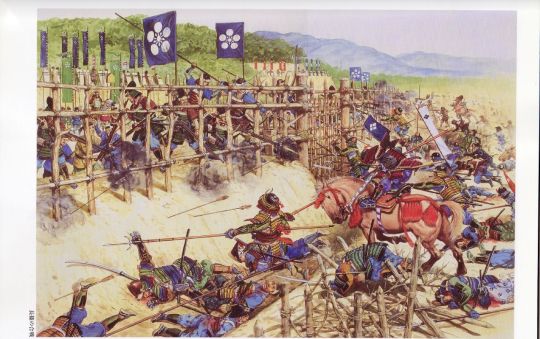






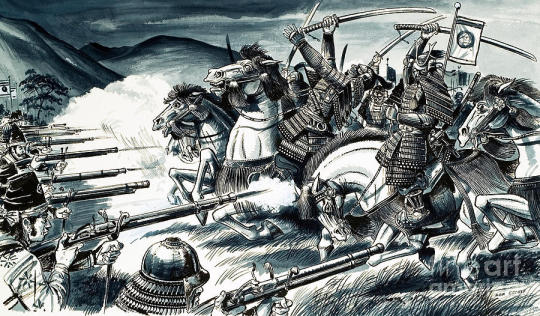


Ten Depictions of the Battle of Nagashino (1575)
Artists are identified in captions
#sengoku period#warring states#japanese history#samurai#oda nobunaga#tokugawa ieyasu#honda tadakatsu#takeda katsuyori#ashigaru#tanegashima#matchlock muskets#historical reconstruction#historical art#1500s#16th century#ritta nakanishi#angus mcbride#johnny shumate#osprey#richard hook#james field#brian palmer#howard gerrard#dan escott#giuseppe rava#gerry embleton#firearms#cavalry
16 notes
·
View notes
Text
Sean bienvenidos, japonistasarqueologicos a una nueva entrega de historia nipona en la que os explico la evolución del artefacto Tanegashima, una vez dicho esto pónganse cómodos, que empezamos.
-
Fue introducido por los portugueses en 1543, en pleno periodo Muromachi desde la isla que lleva su mismo nombre, el polvo negro químico fue inventado por los chinos en el siglo IX, se usaba para los fuegos artificiales, después se trasladó a otros ámbitos.
-
Se cuenta que cuando llegó a Japón, un herrero vendió a su hija para poder producir dicho artefacto, era un producto raro y poco efectivo, no todos los samuráis la utilizaban, ya que muchos preferían, todavía, las técnicas tradicionales más efectivas, además la consideraban un elemento deshonroso. El hecho más notable fue el 28 de junio de 1575 en Nagashino, en la Provincia de Mikawa. El clan de Oda Nobunaga se enfrentaba contra el clan Takeda conocido por su temible caballería, Oda Nobunaga emplearía unas empalizadas para proteger a sus soldados de las sucesivas cargas, en esta batalla se usaría el artefacto en masa. Esto lo podéis ver en el famoso videojuego de Total War: Shogun 2.
-
Esperó que os haya gustado y nos vemos en próximas publicaciones que pasen una buena semana.
-
日本の考古学者の皆さん、種子島の遺物の変遷を説明する新しい日本史へようこそ。 - 室町時代中期の 1543 年に、同じ名前の島からポルトガル人によって導入されました。化学黒色火薬は 9 世紀に中国人によって発明され、花火に使用されましたが、その後他の用途に移りました。地域。 - 彼が日本に到着したとき、鍛冶屋はその工芸品を製造できるように娘を売ったと言われています。それは希少で非効率な製品でした。多くの武士が依然として最も効果的な伝統的な技術を好んだため、すべての武士がそれを使用したわけではありません。彼らはそれを考慮しました不名誉な要素。 最も注目すべき出来事は、1575 年 6 月 28 日に三河国長篠で起こった。 織田信長の一族は、恐ろしい騎兵で知られる武田家と対峙しました。織田信長は連続突撃から兵士を守るために柵を使用しました。この戦いでは、アーティファクトが一斉に使用されました。 これは、有名なビデオ ゲーム Total War: Shogun 2 で見ることができます。 - 気に入っていただければ幸いです。今後の投稿でお会いしましょう。良い一週間をお過ごしください。
-
Welcome, Japanesearchaeologicalists, to a new installment of Japanese history in which I explain the evolution of the Tanegashima artifact. Having said that, make yourself comfortable, let's begin. - It was introduced by the Portuguese in 1543, in the middle of the Muromachi period from the island that bears the same name. The chemical black powder was invented by the Chinese in the 9th century. It was used for fireworks, then it moved to other areas. - It is said that when he arrived in Japan, a blacksmith sold his daughter to be able to produce said artifact. It was a rare and ineffective product. Not all samurai used it, since many still preferred the most effective traditional techniques. They considered it a dishonorable element. The most notable event was on June 28, 1575 in Nagashino, Mikawa Province. Oda Nobunaga's clan faced the Takeda clan, known for its fearsome cavalry. Oda Nobunaga would use palisades to protect his soldiers from successive charges. In this battle, the artifact would be used en masse. You can see this in the famous video game Total War: Shogun 2. - He hoped you liked it and see you in future posts, have a good week.


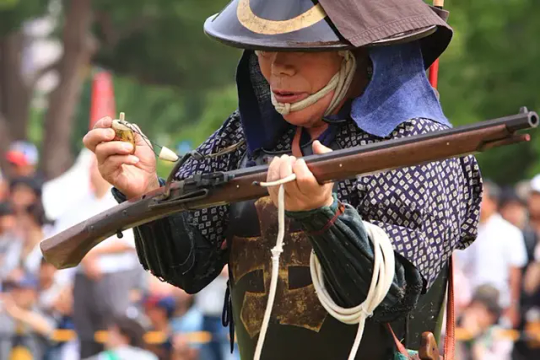
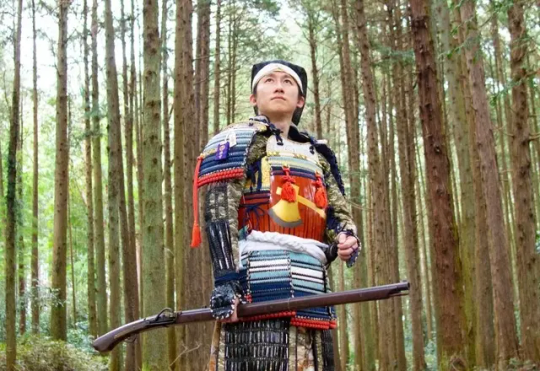


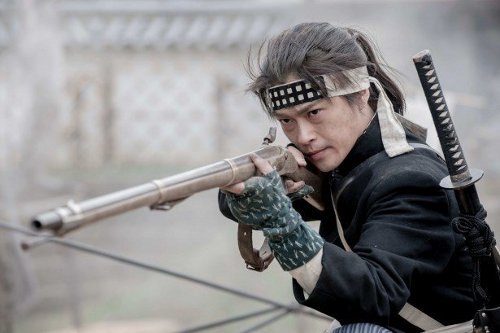
#Japan#History#China#Tanegashima#Hinawashu#NobunagaOgata#Kurantakeda#BattleofNagashino#MikawaProvince#NagashinoCastle#Portugal#MuromachiPeriod#VideoGame#TotalWarShogun2#-#日本#歴史#中国#種子島#日奈和州#緒方信長#倉武田#長篠の戦い#三河#長篠城#ポルトガル#室町時代#ビデオゲーム#photography
23 notes
·
View notes
Text
May 28 - Himeji-jo
Freewriting
I woke up at 8 this morning, took my quiz and grabbed my breakfast bento on my way out the door. I quickly walked to our morning class meeting in the pouring rain (which will remain a constant theme throughout today's blog) before we all departed for Himeji-jo (Himeji Castle.) Luckily, the train rides to Himeji weren't too bad, despite them taking more than two hours collectively (which is more than any other day trip so far.) After arriving in Himeji, it was already noon and still pouring down rain so we broke for lunch inside the station. I ate some ramen which was pretty good for the price (I am trying to stick to Japanese food for the last few days that it is readily available to me.)

After lunch we left the station and began our trek to Himeji-jo in a torrential downpour. Within 3 minutes of being outside, I was soaked to the bone (despite the best efforts of my 7/11 umbrella.) The rain and wind were coming down so hard that they ripped one of my classmates umbrellas off of its spokes. Arriving at the castle's entrance, it was clear why we had travelled such a distance to get here, it was an architectural marvel.

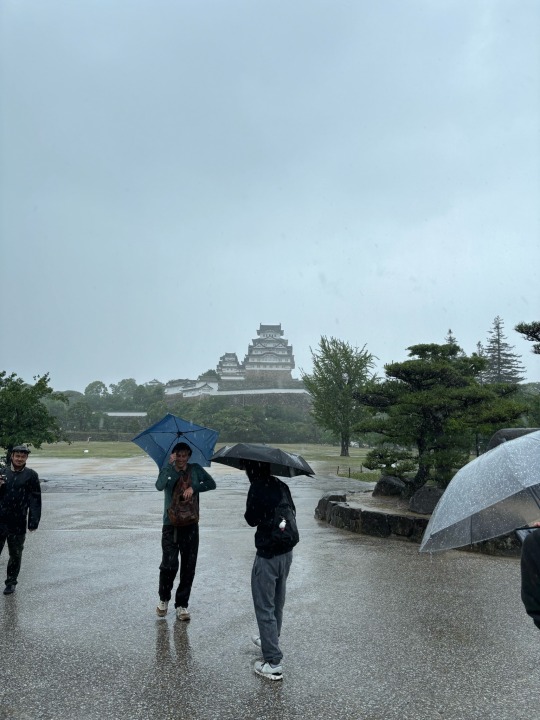

Had it not been for the weather, I think I would have really enjoyed this excursion but the harsh conditions (and the actual pools of water that were at the bottoms of my shoes) made it a little difficult to enjoy myself. Jeans and a T-shirt was clearly not the right wardrobe choice for the day. While at the castle, we visited Sen Hime's room (a well known and revered daughter of an ancient Japanese shogun) as well as other points of interest within the castle. Our exploration of the castle lead us to its top floor, which offered a breathtaking view of Himeji (despite the unfavorable viewing conditions.)
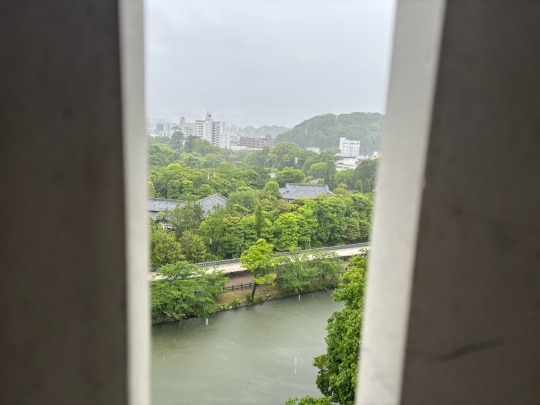
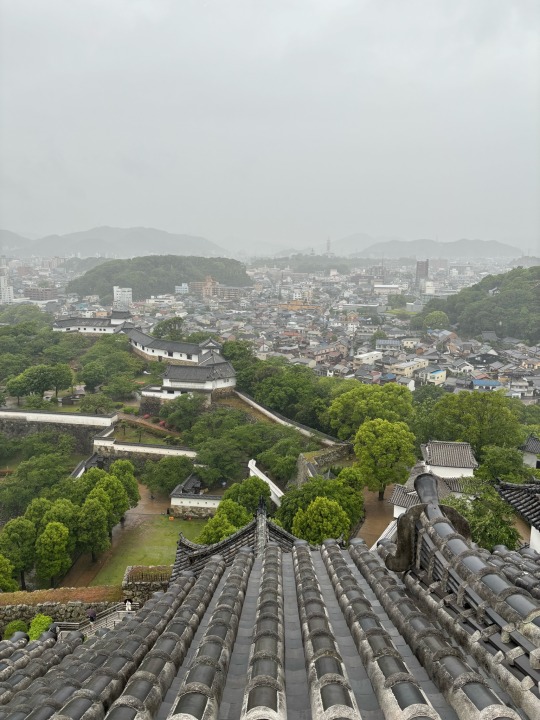
Our final stop at Himeji-jo was an infamous well where a servant was thrown to her death for breaking (or being accused of breaking) a single plate. Legend has it that if your quiet enough, you can still hear her counting up the castle's plates, only to stop at nine out of ten every time.)


Leaving the castle, we retread the deceptively long walk back to the station in the rain before beginning our journey back. The 3 hour journey back from Himeji to Stay SAKURA was brutal, sitting on the train in my soaking wet clothes for such an extended period was extremely uncomfortable. The hot shower after I finally arrived back home, was both life saving and rejuvenating. After resting up for a little, I went to a little dinner place around the corner with Griffin and Rich that was really good.

(We ate more than just this omelet but we scarfed it down so fast that I forgot to take a photo.)
I think the plan for the rest of the night is some guys night karaoke which should be a lot of fun!
Academic Reflection
Today's first reading discussed the role of Japan's Daimyo's in the expansions of castle towns within their domains. Despite widely held historic misconceptions, Daimyo's actually allowed for the peasants and citizens of their castle towns to develop and expand. The Daimyo's would often provide frameworks or assistance when needed, but their role in expansion was dissimilar to their European counterparts who often dominated how their domains would be expanded. The Daimyo of castle towns were often so accommodating that they would be willing to move farms or temples to better fit commoner districts.
Today's second reading focused on the construction of castles in Japan, with a focus on their militaristic applications. Unlike European fortresses of the same era, Japanese castles were built on large hills and mountains, with the walls rising only to the level of the natural landscape. This allowed for varied elevations and easier construction while still allowing the castle to be easily defendable. This was most apparent to me today at Himeji-jo with the various gates and drop offs spanning the castle grounds. The battle of Nagashino had a large impact on the construction of Japanese castles. Most notably, it highlighted the strength of gunner fortifications as the simple musketeer fortifications present at this battle had a major impact on the outcome.
2 notes
·
View notes
Text
The sword, heart of the samurai, or so you thought 🤺
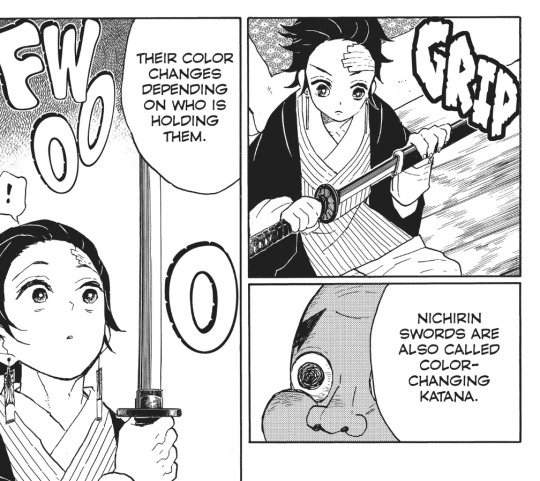
There were three sword hunts during the course of Japanese history. The first one was the Hideyoshi sword hunt during 1580, where it was ordered that only the samurai class could have swords. The second one was the 1876’s Meiji government order to abolish the wearing of swords, with the consequent ending of the samurai class. And third one was in the post WW2 where the Allied Occupation banished everything that could be a weapon and the katana stopped being a weapon to start being a work of art. While it could be argued that they are technically not true sword hunts, the reality is that they shaped the way the Japanese society behaved around said swords.
Swords were a symbol of status, a symbol of the warrior. Or at least it looked like it.
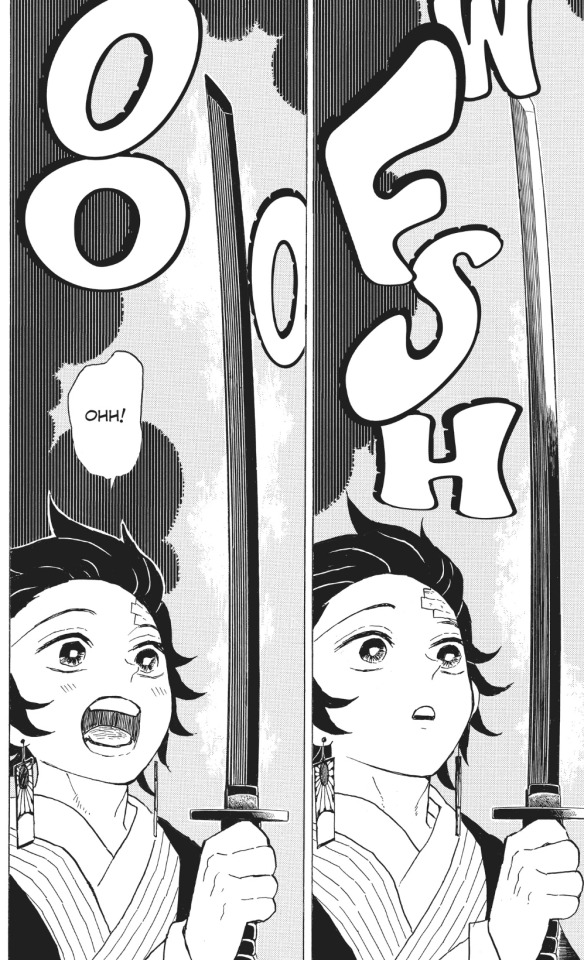
During a long time, war as made by bow and arrow. Then, various types of swords started to appear: the katana (sword), tachi (long sword), hoko or naginata (halberd), yari (lance). But guns were introduced in the 16th century by the Portuguese in Tanegashima, even tho gun powder was already knowned thanks to the Chinese. (If you watched Princess Mononoke, you can see that the guns they used are inspired by Chinese guns and the “more powerful ones” are inspired by the western ones) There is this myth that the oh so mighty samurai would never touch on a gun. Yah sure, they loved them, or at least during the times they were a novelty.
One of Nobunaga's biggest victories was in Nagashino when he used an army with musketeers, and mixed western military techniques with Japanese ones. If they could fight from afar, they would. For instance, the Boshin war was mainly fought by gun. The only fully modern sword fight was the Jipuren rebellion and that happened because they were precisely fighting against the ban of the swords. Also, guns could be expensive to maintain, but it was even more expensive to train someone during years to yield a sword.
The fact that the sword alone was portrait as the soul of the samurai since ancient times has a lot to do with its myths and significance. For instance, one of the imperial artifacts is a sword, so it does have this air of authority. Also, the fact that you behead a person with a sword (the French are laughing with the guillotine) so it was the significance of the ending of a battle. The sword became the social status of the samurai, so when the sword hunts started to affect their status, they started to take it personally.
Japan swords had a symbolic value, fat greater than they had in Europe. It was not just the OG fighting weapon, it was a palpable form of honor, ence “the soul of the samurai”. It was the only embodiment of honor, and it was an obligatory part of one’s costume. You could not have a family name unless you had a sword. If one commoner made something that would make him go up in the social hierarchy, he would be guaranteed the myoji-taito - a ceremony where he would receive a sword and a surname.

Swords were also highly symbolic because of the way the samurai would handle it in battle. There were manuals that would explain the most beautiful and at the same time masterful way of using the swords. And managing a sword was seen as more elegant that managing a gun. Even in the gun teaching manuals it looked like in the remarks that the teachers were sorry because there was not truly a prettier way of handling it. Still even with guns, they always carried a sword. Men felt undress without their swords.
But sooner or later swords would become works of arts thanks to their masterful swordsmith. Major swords dubbed as works of art. Yes, swords are seen as major metallurgical works of art in a lot of part in the word but in Japan they would take this to the extreme. For instance, when Mitsuhide was sieged, he asked for a quick moment of truce so that his swords could be taken out of the castle to the enemy territory and be same, and then they could continue to attack the castle and him. That’s how they would value the swords, even more than their lives.
When the Meiji government to renew the army forbad the samurai to wear their swords, they would rebel. On October 24 1874, in Kumamoto, 170 samurai, dressed in full on armor carrying swords attacked the new national tropes and it would be need the entire national army to be putted down. But they would not distinguish the word of art from the day to say usable object. Sword would be extremely decorated as a symbol of power and that same sword would be expected to be used in battle.
“The sword remains to this day a source of metaphor in Japan for human characteristics” – Perrin, 1979
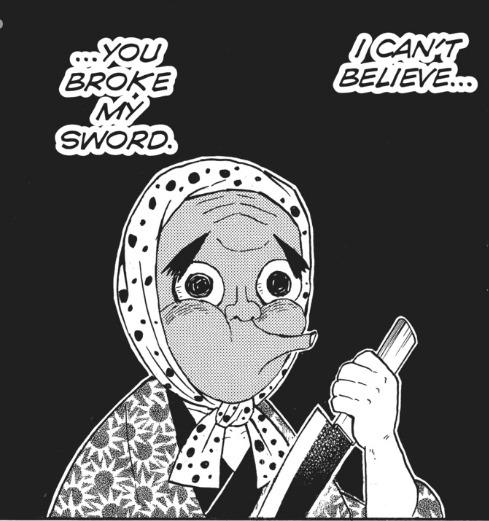
KINOSHITA, Naoyuki. 2001 - From weapon to work of art: “sword hunts” in modern Japan. Senri Ethonological Studies, 54, 119-136; <http://doi.org/10.15021/00002838>;
CLEMENTS, Jonathan. 2017 - A Brief History of Japan: Samurai, Shogun and Zen. The extraordinary story of the land of the rising sun. Chelsea: Tuttle Publishing. Ebook;
PERRIN, Noel. 1979 - Giving up the Gun: Japan’s Reversion to the sword, 1543-1879. New Hampshire. David R. Godine Publisher.
#demon slayer#history#demon slayer from history to fantasy#demonslayerfromhistorytofantasy#history research#japanese history#demon slayer history#kimetsu no yaiba#katana
4 notes
·
View notes
Text
“say it in twenty words or less.”
The one unable to die, Akashi.

Height: 5'2
References: Saitama (OPM), Haruchiyo Sanzu (TR), No Plan B by Manafest, Deadpool. Thought out as Notorious B.I.G' counterpart.
Position: la unità speciale member.
Stand name and ability: No Plan B acts directly on Akashi's cells, preventing him from dying no matter the way, situation, object or event, he will always stay alive. Going as far as growing missing limbs, his stand will keep his heart beating and body functions active.
Birth date: c. 1533.
Backstory: He was one of Oda Nobunaga's soldiers. During the Nagashino battle he had been unable to attend to his duties due to a fever that had forced him to stay in bed.
The night after the battle he had started to feel better and, during dinner, he had fallen asleep. Later on, he would found out he had not fallen asleep but asphyxiated --and still, he had survived. The event had gotten him kicked out, assumed to be a joke and indiscipline.
Years passed and every time something potentially mortal happened to him, Akashi was always able to survive: unable to understand his condition, he roamed the world.
In 1986, when his journey took him to Egypt, an old woman —who had introduced herself as Enya Geil— seemed to catch on his discomfort, and after mocking him for his ridiculously confused expression, she later offered a brief explanation on stands and his own powers. And though he had asked to follow her and serve to her, she had refused.
In 2002, when his journey had already worn him out, Akashi found himself in Rome's streets, sitting in the grass and watching the clouds pass by when someone's silhouette blocked the clouds from his line of view.
The man before him, Abel Agreste, had whistled and commented on how bored he looked: promising to end his boredom if Akashi came to his boss' office, Akashi had nothing to do but accept.
Meeting Don Giovanna had been a strange experience but one so interesting he couldn't hold back but join Passione's ranks.
8 notes
·
View notes
Note
Thank you for answering my question! I know that Nobunaga fought against the Uesugi at The Battle of Tedorigawa, but I wasn't sure if Ieyasu contributed to it.
Well, this is semantics, but "Nobunaga" didn't fight in Tedorigawa. He only sent his vassals, but didn't personally participate.
The Tokugawa only participated in joint missions with the Oda units on the Nagashino, Anegawa, and Tenmokuzan battles, as well as the botched campaign that ended in the Kanegasaki Retreat. Otherwise the Oda just took their own men and the Tokugawa had their own trouble to deal with.
3 notes
·
View notes
Link
The link above goes to “part one”.
Part two: https://twitter.com/NH_Ledbetter/status/1541600726085926912
Part three: https://twitter.com/NH_Ledbetter/status/1541983436931567617
Nathan Ledbetter, someone who has produced a few research papers on the subject of the Battle of Nagashino, breaks down the battle in an easy to understand Twitter thread.
Mr. Ledbetter also has been a guest at the Samurai Archives podcast multiple times before to discuss the subject. If the podcast is too long (they dedicated multiple episodes on this!), the Twitter thread should be more digestible to those strapped for time.
5 notes
·
View notes
Photo
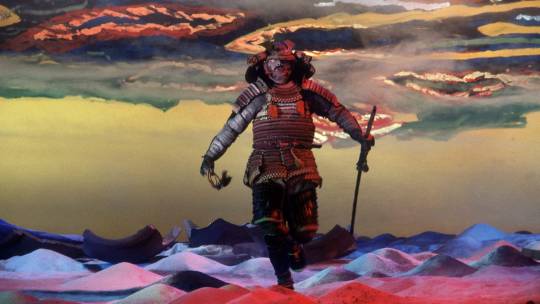
Tatsuya Nakadai in Kagemusha (Akira Kurosawa, 1980)
Cast: Tatsuya Nakadai, Tsutomu Yamazaki, Ken’ichi Hagiwara, Jinpachi Nezu, Hideji Otaki, Daisuke Ryu, Masayuki Yui, Kaoiri Momoi, Mitsuko Baisho. Screenplay: Masato Ide, Akira Kurosawa. Cinematography: Takao Saito, Shoji Ueda. Art direction: Yoshiro Muraki. Music: Shinichiro Ikebe.
In the climactic moments of Kagemusha director Akira Kurosawa shows the general, Katsuyori (Ken'ichi Hagiwara) sending wave after wave of troops, first cavalry, then infantry, against the enemy, whose soldiers are concealed behind a wooden palisade, from which they can safely fire upon Katsuyori's troops. It's a suicidal attack, reminiscent of the charge of the Light Brigade, but Kurosawa chooses not to show the troops falling before the gunfire. Instead, he waits until after the battle is over and Katsuyori has lost, then pans across the fields of death to show the devastation, including some of the fallen horses struggling to get up. It's an enormously effective moment, suggestive of the dire cost of war. The film's title has been variously interpreted as "shadow warrior," "double," or “decoy." In this case, he's a thief who bears a remarkable resemblance to the formidable warlord Takeda Shingen and is saved from being executed when he agrees to pretend to be Shingen. (Tatsuya Nakadai plays both roles.) This masquerade is designed to convince Shingen's enemies that he is still alive, even though Shingen dies soon after the kagemusha agrees to the ruse. The impostor proves to be surprisingly effective in the part, fooling Shingen's mistresses and winning the love of his grandson, and eventually presiding over the defeat of his enemies. But he gains the enmity of Shingen's son, Katsuyori, who not only resents seeing a thief playing his father but also holds a grudge against Shingen for having disinherited him in favor of the grandson. So when the kagemusha is exposed as a fake to the household, he is expelled from it, and Katsuyori's arrogance leads to the defeat in the Battle of Nagashino -- a historical event that took place in 1575. The poignancy of the fall of Shingen's house is reinforced at the film's end, when his kagemusha reappears in rags on the bloody battlefield, then makes a one-man charge at the palisade and is gunned down. The narrative is often a little slow but the film is pictorially superb: Yoshiro Muraki was nominated for an Oscar for art direction, although many of his designs are based on Kurosawa's own drawings and paintings
3 notes
·
View notes
Text
Koei Warriors Retrospective Part 5: Samurai Warriors 1


Samurai Warriors (戦国無双)
Platforms: PlayStation 2, Xbox
Release dates:
Japan: 11 February 2004 (PS2)/29 July 2004 (Xbox)
USA: 6 May 2004 (PS2)/13 July 2004 (Xbox)
Europe: 25 June 2004 (PS2)/24 September 2004 (Xbox)
After working on DW3XL, the series being headed by Akihiro Suzuki, Hisashi Koinuma wanted to create a game based on Nobunaga's Ambition to reflect the Sengoku era of Japan, just as Dynasty Warriors was based on Romance of the Three Kingdoms for the late-Han and Three Kingdoms periods of ancient China. Koinuma apparently wanted to make a multiplayer game with up to four or five characters fighting a single boss, but online multiplayer was premature at the time. Thus, a new team was formed and the Samurai Warriors series was born.
The series celebrates its 20th anniversary in 2024. Let's take a look at the game that started... well, some complicated feelings and situations later on down the line.
Samurai Warriors
Samurai Warriors focuses on the stories of three warlords of the era, namely Nobunaga Oda, Kenshin Uesugi and Shingen Takeda. Masamune Date was introduced in this game even though his relevance in history began a few years after Nobunaga's death. Goemon Ishikawa and Okuni were also introduced even though they weren't samurai or affiliated with the main clans, though for the former case you could say that for the female characters in Dynasty Warriors. Here's a full list of the characters who were introduced in this game:
Yukimura Sanada
Keiji Maeda
Nobunaga Oda
Mitsuhide Akechi
Goemon Ishikawa
Kenshin Uesugi
Oichi
Okuni
Kunoichi
Magoichi Saika
Shingen Takeda
Masamune Date
Nō (spelled Noh in this game only)
Hanzō Hattori
Ranmaru Mori
The following unique NPCs were introduced in this game as well:
Hideyoshi Hashiba
Yoshimoto Imagawa
Ieyasu Tokugawa
Nagamasa Azai
While Kennyo Honganji and Dōsan Saitō are also NPCs in this game, the former only appears in Magoichi's story and the latter only appears in a movie for Nō, so they have been separated from the list.
Unlike in Dynasty Warriors, where scenarios are defined by kingdom or taken from a shared pool of scenarios, Story Mode in Samurai Warriors is individualised and versions of each battle will be different for each character. Each character has five stages, but for most characters, there is a split path after the third or fourth stage. In the case of Keiji and Magoichi along with Goemon's upper path, their fifth stages are unlocked by fulfilling certain requirements in the stages before it. Okuni does not have such restrictions.
Because of the individualised Story Modes, Free Mode of course gives you the option to play any Story Mode scenario as any character. As I alluded to in the review for DW3, movies are unskippable when they are first played, but at least they're subtitled (captioned) in the English version. Some scenarios have third-party enemies, represented in yellow (instead of blue for allies and red for enemies) that can fight both armies in the battle.
Much of the stages revolve around Nobunaga's main campaigns such as Okehazama, Mt. Inaba Castle, Anegawa, Nagashino and Honnōji. Post-Nobunaga stages include Yamazaki, Ueda Castle and Ōsaka Castle (Siege of Ōsaka/The Ōsaka Campaign). Some stages are field battles and some are castle battles. Some, however, are siege battles, meaning that they are two-part field and castle battles. Yeah, you'll know if it's a siege battle when you see it.
At the end of each Story Mode, there are two endings you can unlock. Most of them are as simple as clearing the upper or lower paths, but for some, there are conditions you have to fulfil to unlock them, like achieving a certain mission or defeating a certain officer. I said that Okuni didn't have split paths or a fifth stage that needs to be unlocked a certain way, but Okuni has multiple "Dreams and Illusion" endings that are unlocked by achieving certain objectives.
Each battle has objectives/missions to guide you. The first mission typically begins at the start of each battle and certain missions occur depending on whether other missions are successful or failed. Certain missions also occur when you approach certain officers or areas. These factors matter if you are trying to 100% the game. Of course, you could disregard the missions, but the battles become a bit harder that way.
If you thought having your player character being listed as a subofficer was diminishing enough, imagine playing in Free Mode as a non-listed character only to be listed under the allied commander as literally "Player 1" or "Player 2". Not even that, it's also there on the battle preparation screen just before you start the battle. Even DW3 didn't do this.
New Officer Mode is the CAW system implemented differently, because after you name and pick a model for your character, you have to go through 12 months (sessions) of training and pass the Trials of Acceptance with a clan in order for your character to be saved. In each month, you pick a training exercise, which is the same as those in Challenge Mode, and at the end, two of those exercises become your Trials depending on the clan you decide to serve under. You need a combined score of 100 to pass (it is possible to pass with the first test, even if you go over 100), you are assigned the weapon you are the strongest with (sword, spear or naginata) and an element depending on the clan you picked, and your stats carry over into your growth in the main game. New Officer Mode is good, but I prefer to be able to directly create my characters rather than going through this training bullshit.
There are a total of 12 character models available, but four need to be unlocked. This can be done by having your weapon attack stat over 50 by the fourth month of your training, at which point you will encounter a Strike Ninja who has come to wreck the place. You'll fight him, but then you'll discover that he recovers his health every time. Your master will discover that Musou Attacks are his weakness and you'll use it to defeat him.
There are also other encounter events that are available if you select a particular challenge with certain stats above certain levels. Hanzo gives you an item for the game, Magoichi allows you to use a rifle instead of a bow for your R1 ranged attack and other characters allow you to unlock a particular skill once your character is saved. Do note that in most cases, you won't face a challenge with the same weapon you're training with, which can be detrimental if you've been training with a spear or naginata and you're suddenly given a sword (that you never trained with) for the challenge.
Speaking of these challenges, giving your characters certain names in the Japanese version will boost certain stats, which can help to achieve the encounter events particularly if you use the eight names listed below (I allowed space in my list just to do that). I don't know if such a feature exists in Western releases, particularly on the PS2 as the entry I found on GameFAQs apparently relates to the Xbox version.


Sometimes, your master, his daughter Saya or his other student Dokkimaru will give you something to boost/nerf your life/musou or recover your health (if you haven't recovered it during training). If you train with a particular weapon too frequently, your master will ask you to use another weapon for the next training session just to mix it up. Once your character is saved, they can then be played in Story Mode as they will have their own story. In fact, all the CAWs share the same Story Mode where they fight with different clans.
Each of the challenges make use of the game's battle mechanics. The Melee challenge is your usual "defeat as many enemies as possible" trial, Musou has you do that with only your Musou attack, Combo asks you to rack up 5+ hit combos, Archery has you shoot enemies to stop them from getting past you, Deflect requires you to skilfully deflect arrows with your attacks, Burst is where you get to the goal as fast as possible, and Riding has you run two laps around an obstacle-laden Honnōji on horseback as fast as possible. With regards to Riding, there'll be an enemy ambush you need to clear in the second corner of your second lap and after clearing the third corner there are two paths you can choose; one with obstacles and one with recovery items. I think it's obvious what players will likely pick.
Although it isn't mentioned on the wikis (or elaborated on in the manual) for some reason, Versus Mode is a thing in this game, where you can play challenges against another player or the computer. There is Showdown, where you race to be the first to defeat all your opponent's officers; Pursuit, where you gather information to find the real Goemon; and Strike, where you race to be the first to defeat 1000 enemies (enemy officers get you 50). You have infinite lives in this mode and you can defeat your opponent to delay them.
Finally, there is Survival Mode, aka the Infinity Castle Mode. In Abyss, you fight your way 30 floors deep into the castle where you will encounter Lu Bu (of the Bu Army) as a secret character. In Tower, you try to clear as many floors as possible within 20 minutes. There are items to be obtained when you clear 30 floors in either challenge. The game automatically saves every 3 floors so you can pick up where you left off. Of course, this mode gets harder the longer you play it, but since I was mostly playing to obtain all the items, I put on some cheats near the end. No additional voices are recorded for this mode except for Lu Bu.
Moving onto the battle mechanics of the game. You can keep up to 3 weapons per character. The item selection is similar to DW3 where you can pick up to five items (including saddles) to use in battle. Some items are specially made for field or castle battles. You can also select from three groups of up to 4 bodyguards to accompany you in battle, selecting their uniform colours and their orders. The bodyguard groups can also be edited and renamed, the various types being infantry, spear, ninja, archer, musket and lady ninja.
Depending on the weapon, characters can perform up to 8 Normal Attacks and 4 triple-tiered Charge Attacks. This moveset would become known in later games as the Charge/Power Attack moveset. There are four elements available; Fire, Ice, Lightning and Dark, the latter being where the player drains life from an opponent to recover theirs. There is still a bit of lock-on happening when you perform charge attacks, however, but it's not as bad as it was in DW.
Like in the Dynasty Warriors games, holding down R1 allows you to perform a ranged attack by shooting arrows, or becoming a sniper in the case of Magoichi Saika. There are no arrow stocks to collect so you essentially get unlimited arrows. Using the bow can help you in castle battles as sealing off strongholds/bases/checkpoints can give you an extra 60 seconds of time.
Musou Attacks in this series use up the whole gauge when activated and not for as long as you hold down the Circle button like in DW. If you're not holding down the button, you can freely perform other attacks until the Musou Attack ends with a shockwave finish. When triggering your Musou Attack, you will see a kanji character that is representative of the character at the start of it and you will see a different kanji for the True Musou Attack. For custom characters, the Musou kanjis vary depending on the gender of your character's model and the weapon they are using (for this game only, the spear Musou is different depending on the gender of your character). In the Japanese script, Musou Attacks are called Musou Ougi (無双奥義) instead of Musou Ranbu (無双乱舞) in Dynasty Warriors.
When playing with a second player, you both work to charge one Musou gauge from both sides and when one player activates their Musou, the other can perform their Attack too, before ending with the True Musou finisher (even if you haven't done anything). This is called the Double Musou Attack, or the Final Musou Attack (無双最終奥義) in Japanese.
When you end up in a deadlock and you push your enemy over the edge by pushing your bar up to the end, you perform a Deadlock Attack to deal damage.
When on horseback, you have the same 8 normal attack and 4 charge attack string you would have on the ground. This moveset would remain the same in future games. The horseback C1 usually has the horse stomp its front feet on the ground if you're stationary, but if you're moving then the Triangle button allows you to jump with your horse. Exclusive to this game, the horseback Musou has you swing your weapon back and forth while charging forward, similar to DW.
Aside from the ordinary horse saddle, the rare saddles you can obtain are those for Matsukaze and the Persian Mare, aka the Arabian Steed, the legendary horses for Keiji Maeda and Masamune Date. Take note that while riding on Matsukaze, you run the risk of running over allies and depleting their health.
At the end of each stage, you can earn skill points to unlock or upgrade skills. Skills can be upgraded up to Level 3, but when you reach level 20 at 99,999 XP, you stop earning skill points or boosting stats, which means you have to be conservative about what skills you decide to unlock.
The English dub of this game was produced by Voicegroup, which had previously dubbed DW4. As such, you can hear the likes of Douglas Rye as Nobunaga Oda and Tadakatsu Honda, Richard Cansino as Hideyoshi Hashiba and Yoshimoto Imagawa and Wendee Lee as Oichi and Ina. Those three voice actors would prominently be featured in future Dynasty Warriors games. I'm especially highlighting this here because I want to discuss the state of the Samurai Warriors English dub as time goes on. Narrations are not dubbed in this game, but the narrator in the Japanese version is Hiroshi Isobe, who also voiced Magoichi Saika.
Samurai Warriors Xtreme Legends


Samurai Warriors Xtreme Legends (戦国無双 猛将伝)
Platforms: PlayStation 2
Release dates:
Japan: 16 September 2004
USA: 9 November 2004
Europe: 25 February 2005
Like with the Dynasty Warriors games before it, the Samurai Warriors series also received its own Xtreme Legends expansions.
Hideyoshi Hashiba and Yoshimoto Imagawa were unique NPCs in the vanilla game, but in the expansion, they are made playable. Tadakatsu Honda and Ina make their debut as Tokugawa officers to complement Hanzō. All four officers have their own Story Modes with split routes.
Survival Mode is upgraded to provide gold rewards after playing. The two existing modes are also upgraded to Deep Abyss and High Tower. A new stage is added, Gold Rush, where you have five minutes to collect gold in the Training Hall while completing challenges to extend that time limit. You can only keep the gold you earned if you exit the stage in time, which is absolutely bullshit for someone like me who only bothers to play up to Level 3 weapons. With such a small time limit, you should be able to keep the money you earned (or part of it at least) if you run out of time and not die during the stage.
After clearing Gold Rush, you will be brought to the Armory, where you can upgrade weapons at the weaponsmith or engrave a name on a weapon (per character). This can't be done for Level 6 weapons at all and Level 5 weapons until you get the Level 6 weapon. You can also buy or upgrade items here, with the Golden Rune being a rare item only available through this mode for 50,000 gold. Also, you should be able to directly access the Armory without having to go through Gold Rush.
Three more challenges have been added to Versus Mode, those ones being those actually covered on the wiki. Duel is a simple one-on-one fight where you can also select different stages to give you a bit of a challenge; Sumo is where you play as Strike Ninjas to force enemies out of the ring; and Gatekeeper is where you defend the checkpoint and prevent enemies from escaping behind you.
Among other improvements to the game, you can still earn skill points and develop basic abilities even after reaching 99,999 XP and you can also upgrade your skills to level 4. You may also see a green frame when you select a character; that character is a lucky character and playing as them will give you a higher chance of getting good weapons and items. The lucky character changes every time the game is booted.
In the options, Player 2 can be set to have an individual Musou gauge and unleash Musou Attacks independently at the cost of you being able to use the Double Musou Attack. The expansion also introduces the Novice and Chaos difficulties to the game.
Throughout the game, you will get bonus (rice) points to use in rewards. You can unlock voice tests for characters, change the save icon in the memory card, unlock additional models for characters, enable those models to appear in the game when you use them on your character), reduce the minimum difficulty to unlock Level 5 and 6 weapons (from Hard and Chaos to Normal and Hard respectively) and allow character levels to progress past the normal limits.
I don't know if it's a thing in the English versions, but in the Japanese versions of the Warriors games, you can install data to the HDD/BB Unit to reduce loading times. This would also later become a thing in the PSP games, but in DW6 Special and Empires for the PSP, installing data to the Memory Stick Duo would also enable encounter and defeat voices in battle dialogue.
Rant: The benefits of the Create-A-Warrior system
More of a ramble than a rant this time around.
So at this point, we have two mainline games with CAW capabilities, namely being DW4 and this game. This would become relegated to the Empires games before coming back to the forefront in SW3 and SW4. Earlier implementations of CAWs were quite limited in their customisation, though there is more freedom for this in future games.
Edit characters allow for a more unique experience in games as aside from being able to be played in Free Mode (and possibly other modes), they also get other unique modes through which to shine. With Samurai Warriors, that unique mode is the New Warrior Mode, where creating characters involves having to pass a trial with a clan in order to pass and save them.
As CAW characters are a main feature of the Empires games, it would be ideal if they had functionality to import CAWs from the save data of the main games to save time on having to create characters. DW7 and DW8 do not have CAWs in the main game, but even without a unique mode for them, they can get a chance to shine in the auxillary modes before being able to be imported into the Empires games.
Samurai Warriors is a decent adaptation of the Sengoku era into a hack-and-slash game while also making it distinct from Dynasty Warriors in terms of gameplay. It had its own fantastical and romanticised elements (just like Dynasty Warriors and its source material, Romance of the Three Kingdoms), plus there are quite a few pop culture references in the Japanese version, particularly with the True Musou Attacks and victory poses. These references would be toned down in future games as Koei began to get more serious with these games.
Next time, we take a look at this game's spinoffs, namely State of War and the Pachislot game. Why the hell am I even covering the latter? You'll have to find out then.
#samurai warriors#samurai warriors xtreme legends#koei tecmo#koei warriors#koei warriors retrospective
1 note
·
View note
Text
Takeda Firelance Calvary

BIO
The Bakufu has had a rich history of mounted battle since the Warriors of the Tribal eras. The Samurai Warriors, have a rich history of remembering conflicts.
Remembering the sting of firearm defeat at Nagashino long ago, the Takeda clan, serving under the new Court-And-Camp Minamoto Bakufu, has pioneered Hojutsu-ryu-kyubanomichi, one of the first updates on the old ways of "horse and bow", focusing on the tricky task of integrating gun use into the Cavalry's military arts.
SUGGESTIONS
Lack of armor-robe combos and even slightly historical heavy armor was a minor issue; and relative lack of options with mounts became somewhat apparent.
#japan#samurai#artists on tumblr#war#digital art#creativity#hero forge#minis#mini#d&d miniatures#miniatures#3d art#military#army#sword design#character design#design#d&d character#d&d#oc artwork#ocs#oc#original story#my original art#original#oc lore#lore
1 note
·
View note
Text
Events 6.28 (before 1920)
1098 – Fighters of the First Crusade defeat Kerbogha of Mosul at the battle of Antioch.
1360 – Muhammed VI becomes the tenth Nasrid king of Granada after killing his brother-in-law Ismail II.
1461 – Edward, Earl of March, is crowned King Edward IV of England.
1495 – A French force heavily defeats a much larger Neapolitan and Spanish army at the battle of Seminara, leading to the creation of the Tercios by Gonzalo de Córdoba.
1519 – Charles V is elected Emperor of the Holy Roman Empire.
1575 – Sengoku period of Japan: The combined forces of Oda Nobunaga and Tokugawa Ieyasu are victorious in the Battle of Nagashino.
1635 – Guadeloupe becomes a French colony.
1651 – The Battle of Berestechko between Poland and Ukraine starts.
1745 – A New England colonial army captures the French fortifications at Louisbourg (New Style).
1776 – American Revolutionary War: The Battle of Sullivan's Island ends with the American victory, leading to the commemoration of Carolina Day.
1776 – American Revolutionary War: Thomas Hickey, Continental Army private and bodyguard to General George Washington, is hanged for mutiny and sedition.
1778 – American Revolutionary War: The American Continentals engage the British in the Battle of Monmouth Courthouse resulting in standstill and British withdrawal under cover of darkness.
1797 – French troops disembark in Corfu, beginning the French rule in the Ionian Islands.
1807 – Second British invasion of the Río de la Plata; John Whitelocke lands at Ensenada on an attempt to recapture Buenos Aires and is defeated by the locals.
1838 – Coronation of Queen Victoria of the United Kingdom.
1841 – The Paris Opera Ballet premieres Giselle in the Salle Le Peletier.
1855 – Sigma Chi fraternity is founded in North America.
1859 – The first conformation dog show is held in Newcastle upon Tyne, England.
1865 – The Army of the Potomac is disbanded.
1870 – The US Congress establishes the first federal holidays (New Year Day, July 4th, Thanksgiving, and Christmas).
1880 – Australian bushranger Ned Kelly is captured at Glenrowan.
1881 – The Austro–Serbian Alliance of 1881 is secretly signed.
1882 – The Anglo-French Convention of 1882 marks the territorial boundaries between Guinea and Sierra Leone.
1894 – Labor Day becomes an official US holiday.
1895 – The United States Court of Private Land Claims rules James Reavis’s claim to Barony of Arizona is "wholly fictitious and fraudulent."
1896 – An explosion in the Newton Coal Company's Twin Shaft Mine in Pittston, Pennsylvania results in a massive cave-in that kills 58 miners.
1902 – The U.S. Congress passes the Spooner Act, authorizing President Theodore Roosevelt to acquire rights from Colombia for the Panama Canal.
1904 – The SS Norge runs aground on Hasselwood Rock in the North Atlantic 430 kilometres (270 mi) northwest of Ireland. More than 635 people die during the sinking.
1911 – The Nakhla meteorite, the first one to suggest signs of aqueous processes on Mars, falls to Earth, landing in Egypt.
1914 – Archduke Franz Ferdinand of Austria and his wife Sophie are assassinated in Sarajevo; this is the casus belli of World War I.
1917 – World War I: Greece joins the Allied powers.
1919 – The Treaty of Versailles is signed, ending the state of war between Germany and the Allies of World War I.
0 notes
Text
A look into Japanese history Part 5
Oda Nobunaga:
Gained control of Owari province in 1559.
Captured Kyoto in 1568.
Eliminated enemies, including militant Buddhist sects (Ikko sect).
Destroyed Enryakuji monastery in 1571.
Continued fighting the Ikko sect until 1580.
Fortunate deaths of rivals Takeda Shingen and Uesugi Kenshin.
Defeated the Takeda clan at the Battle of Nagashino in 1575 using modern warfare.
Murdered by general Akechi Mitsuhide in 1582.
Toyotomi Hideyoshi:
Defeated Akechi Mitsuhide and took control after Nobunaga's death.
Subdued Northern provinces and Shikoku by 1583.
Conquered Kyushu in 1587.
Defeated the Hojo clan in Odawara in 1590, completing Japan's reunification.
Destroyed many castles to strengthen control.
Conducted the "Sword Hunt" in 1588, confiscating weapons from farmers and religious institutions.
Enforced strict social class distinctions, requiring samurai to live in castle towns.
Started a land survey in 1583 and conducted a census in 1590.
Completed Osaka Castle in 1590.
Issued an edict in 1587 expelling Christian missionaries.
Increased persecution of Christians in 1597, executing 26 Franciscans.
Attempted to conquer China by invading Korea in 1592.
Captured Seoul but was pushed back by Chinese and Korean forces.
Final evacuation from Korea in 1598, the year of his death.
Tokugawa Ieyasu:
Successor of Hideyoshi.
Became the most powerful man in Japan after Hideyoshi's death.
1 note
·
View note
Text
There are unfortunately few books on Japanese history in English that begin prior to the Tokugawa Shogunate:
One unfortunate trend shared with the historiography of Germany and Japan in English (not so much Italy, though) is the tendency to drastically prune the histories of this countries to begin at the most generous with Martin Luther and Tokugawa Ieyasu, at the least generous with Commodore Perry and Kaiser Wilhelm I and Bismarck. This book is one of those exceptions and is a good concise single-volume history of Japan from the Paleolithic to the then-current 1999.
A fuller history of Japan that starts with the complexities of nation-building, it does have the blind spot and a strange one of mentioning the Emishi people as a part of Japanese state formation but completely omitting the Ainu altogether. It also has some blind spots of describing some battles and wars in detail but having surprisingly little detail to the Unification in the ways one might expect. Sekhigahara gets detail, Nagashino does not.
It's also a short book at 261 pages covering 15,000 years of history so these are just the more notable recent skip-overs and there are plenty of other ones. Still an extremely good concise example of how to do these histories better.
9/10.
1 note
·
View note
Text
Guns!!! And Tanegashima goes pow pow 🔫
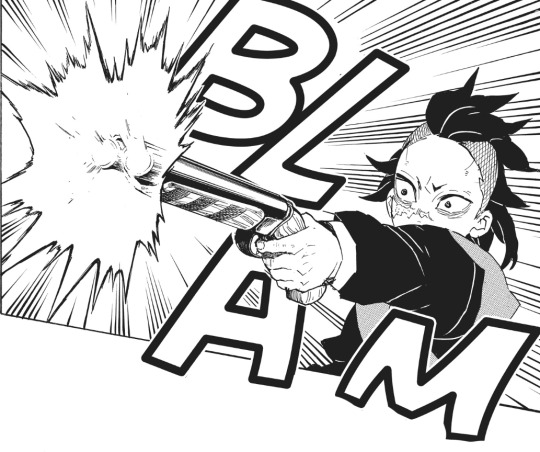
Take a shot every time you see the joke "Demon Slayer would take half of the time if they gave a gun to Inozuke", then they realise that Genya does have a gun and that Inozuke does not have one because for him that's probably an alien mechanism (Or an Oni one ba dum tsss). And then everyone asks: "WHY DOES GENYA AS A GUN?!" CAUSE THEY WERE A THING AT THE TIME FOR GOODNESS GRACE!!!
Once again this happens because people forget that we are in the Taisho Era [1912-1926] and that Japan was a war machine, while being in the perception that they did not know what guns where, because of the tale that the true warrior would only use a katana. Well, let me tell you that the Japanese loved a good gun ever since the 16th century and we have the Portuguese to thank for that. (PORTUGAL C*R*LH*)
The Portuguese arrived at Tanegashima in 1543. And arrived by accident. At the time the Ming Empire and the Japanese Empire were not in good terms (are we even surprised?), and with the Ming closing the borders to foreign trade, it was the pirates that made the trade (cue the One Piece opening). The Waku (not waku waku meaning excited for the love of God, Waku means pirate) would trade the Japanese silver for Chinese silks, but still with a lot to gamble. And then the Portuguese arrived at Macau, and casually became the 3rd party that brought to the Japanese and Chinese what was needed for the trade. Now in the Japanese ports more western trinkets would show like bread, tobacco, dark skinned people, plants, and you guessed it, guns!
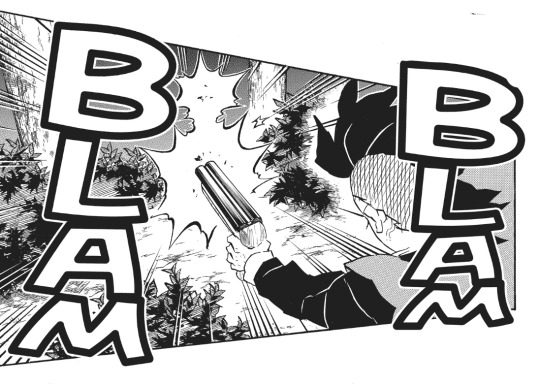
When the Portuguese and other Europeans [mainly Dutch] arrived in Japan, the country was at war [yes, the Sengoku Jiddai], so every type of war mechanism would be welcomed. The Daimyo of Tanegashima - Tanegashima Tokitaka - saw one Portuguese sailor, that arrived in a Chinese cargo, shooting ducks, and he quickly asked for shooting lessons. Soon he would buy the gun for himself and order his swordsmiths to replicate the weapons. Within a year the Japanese were able to replicate the gun and within a decade there would be gunsmiths all over the territory. The gun was called “tanegashima” only later being called “teppo”. There would be also books that would explain how to use them. But these weapons would be quickly adopted, used, but also quickly abandoned.
By 1560 guns were already being used in battle. The battle of Nagashino was the most iconic one in history in these terms, since Oda Nobunaga used for the 1st time western techniques merged with the Japanese ones. But there was one problem with using guns in battle, all the rituals that took place before could be in danger (oh the drama). Normally, before the slaughter, enemies would exchange some words like presenting themselves or exchanging complements. But with guns, one could skip that and just shoot from afar.
Guns were starting to be seem as double edge sword (please appreciate the joke). Everyone could learn to fire a gun and because of that it became a symbol of a lowly warrior. The mighty samurai still carried the 2 swords, the low-ranking ones started carrying a sword and a gun. Firearms were at its hight, and because of that the resistance would begin. A lowly farmer could kill a samurai. The skill stopped being needed in the warrior but in the weapon. On one hand everyone realised that these guns were superior, but on the other, no one on the bushi class would use them. The Japanese moved from sword to sword with guns, to only swords again. The last big battle were guns had a part was in the Shimabara rebellion. And after that samurai when back to the sword lessons.
In reality there was never a formal ban of firearms in Japan. The Tokugawa Shoguns 1st started to control the production of Guns in 1607, were then 1st tried to unite all gunsmiths in the same place at Nagahama. Japan's being against the use of the gun could also be explain to his general reaction against outside ideas. People would try to adapt and develop new guns and swords ideas thanks to the small contacts that still came from the Dutch in Deshima, but the true revolution came with Commodore Matthew Perry and when he opened the borders by force. And so, the new government would develop a new military force, inspired by the western counterparts, and would ban the samurai from wearing their swords, and would put guns in the hands of the officials. At the turn of the XX century Japan was caught up with the new military technology from the west and will start to use them in a war force that would astound the Western side of the world.

FIGUEIREDO, Rafaela. 2022 - 南蛮 Namban: Mais do que Bárbaros: A arte como testemunho de um encontro cultural. MA Diss. Faculdade de Letras da Universidade de Lisboa;
PERRIN, Noel. 1979 - Giving up the Gun: Japan’s Reversion to the sword, 1543-1879. New Hampshire. David R. Godine Publisher.
#demon slayer#demon slayer from history to fantasy#demonslayerfromhistorytofantasy#history#demon slayer history#history research#japanese history#kimetsu no yaiba#research#genya shinazugawa
6 notes
·
View notes
Text
Watch "Battle of Nagashino 1575" on YouTube
youtube
youtube
0 notes